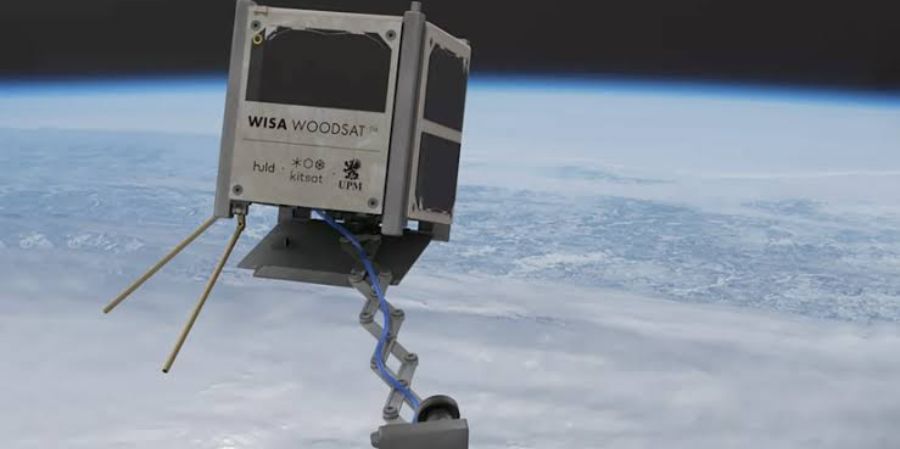

FIRSTLY, WHAT ARE SATELLITES?
In the context of spaceflight, a satellite is an object that has been intentionally placed into an orbit. All planets have their natural satellite (Like Earth has Moon). For research purposes, humans have been successfully able to establish various satellites into the orbits which surround earth but also into the orbits that surround other planets as well. To differentiate these human-made satellites from the natural ones, these are called artificial satellites. The world's first artificial satellite, Sputnik 1 was launched on 4th October 1957 by the Soviet Union.
Almost 850 satellites are revolving in different orbits in space.
SECONDLY, IF NOT WOOD THEN WHAT WERE SATELLITES PREVIOUSLY MADE OF?
A satellite’s composition list includes various element but the ones which hold the most importance are Aluminium and Kevlar.
Aluminium is one the most often used material in spacecraft, main reason being its light weight. Aluminium alone is not that strong of a metal to handle extreme conditions in space but when combined with other metals to make alloys, it becomes stronger.
Kevlar, an incredibly strong, durable, lightweight and tough material is prominently used in satellite formation. Kevlar is incredibly resistant to temperature changes which makes it ideal for space situation.
WORLD'S FIRST WOODEN SATTELITE - "WISA Woodsat"
WISA Woodsat, the world's first wooden satellite, a tiny CubeSat is scheduled to be launched by European Space Agency. It is mainly made of plywood for its surface panels. The plywood used here is a special coated one, called WISA. The main aim of this mission is to test the durability and capability of plywood to withstand the extreme conditions of outer space, in order to judge the possibility of using this material for future space endeavours.
If we give it a thought we might find it difficult to accept the fact that wood (specifically, plywood) can survive extreme heat and pressure conditions that space offers. So, it is very obvious to ask ~
HOW CAN A OBJECT MADE OF PLYWOOD SURVIVE AND THRIVE IN SPACE?
Plywood being too humid for use in space, scientists decided to place the wood in the thermal vacuum chamber to dry it out. The dried-out wood further undergoes atomic layer decomposition, which forms a very thin layer of aluminium oxide onto it. Hence, making the wood used in this satellite a special one called WISA.
SO WHAT DIFFERENCE DID IT CREATE?
• The aluminium oxide layered on the plywood will prevent the wood from releasing any gas in the space environment.
• Aluminium oxide will also protect the surface from the corrosive effect of atomic oxygen. This atomic oxygen can be very easily found at the fringes of the earth atmosphere.
FEATURES :
• The satellite will have 2 cameras, one of them will be attached to a metal selfie stick, which will be used to observe how plywood surface changes under extreme space conditions.
• The satellite will carry pressure sensors that will measure pressure in the satellite’s onboard cavities.
• The satellite will also contain an amateur radio payload which will allow hobbyists to relay radio signals and image around the globe.
• This satellite will be powered by nine small solar cells.
.
The current 'Woodsat' is a new generation of technology. The “WISA Woodsat” satellite will be launched into its 300 and 370 miles polar orbit on Rocket Lab's Electron Rocket. It is scheduled to be launched by the month of November this year.
"We foresee a lot of possibilities in the future by using the know-how developed in this mission", Matti Anttila, Space Business Development Director from Huld, said in the statement.


































